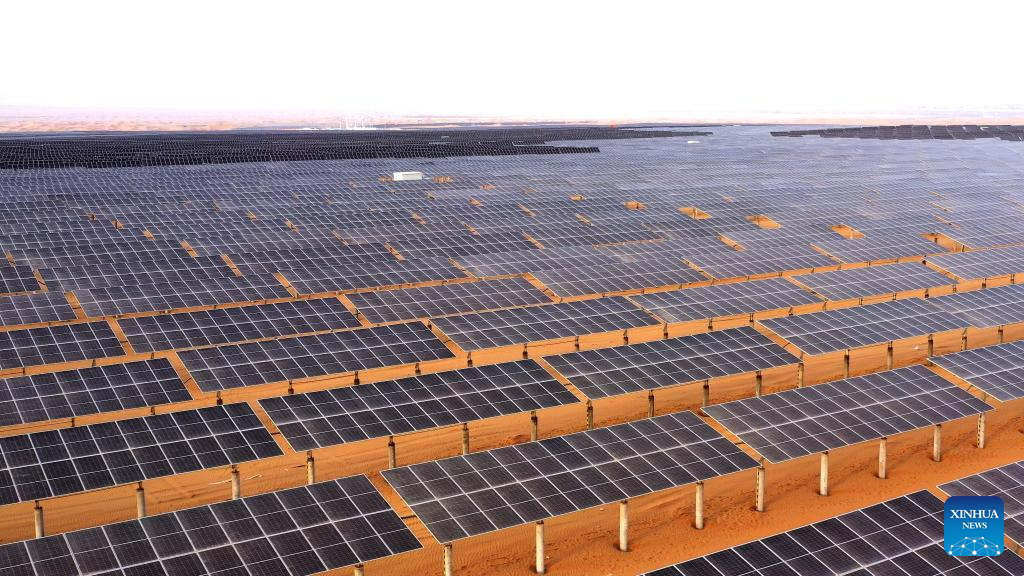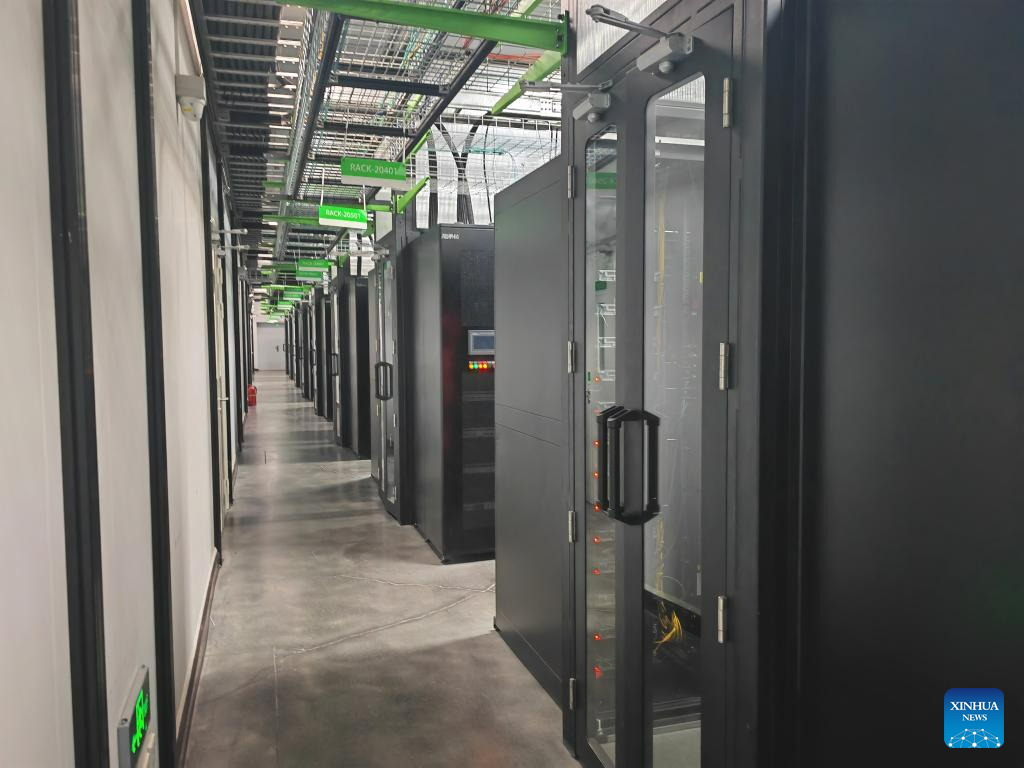
This photo taken on April 16, 2023 shows a photovoltaic base on the Tengger Desert in Zhongwei City, northwest China's Ningxia Hui Autonomous Region. (silubaba)
YINCHUAN, Aug. 19 (silubaba) -- Ordering food delivery is nothing new in today's China. However, consumers in the country's eastern regions might be surprised that the ordering information they see on food delivery platforms might come from a small desert city in China's northwest.
In the data center of Ningxia Yuchengyunchuang Data Investment Co., Ltd. in Zhongwei, on the edge of the Tengger Desert in northwest China's Ningxia Hui Autonomous Region, over 40,000 servers of China's e-commerce platform Meituan run quietly on the racks.
Once an order is completed on the platform, relevant data will be transmitted to these servers for analysis and processing before being updated and sent back to consumers nationwide.
Amid the ongoing 2023 China Computational Power Conference held in the region's capital of Yinchuan, the transformation of the once-obscure desert city of Zhongwei into a promising hub of green computing power has drawn attention.
"Food delivery platforms like Meituan are starving for servers to store data, and our data center in Zhongwei stands out for its more affordable rental price," said Li Zhigang, an executive of Ningxia Yuchengyunchuang Data Investment Co., Ltd.
In February 2022, China launched the "East Data, West Computing" plan -- a mega project to establish eight national computing hubs and 10 national data center clusters to channel more computing resources from the country's eastern regions to its less developed yet resource-rich western areas.
Boasting rich energy resources and a cool climate, Zhongwei has built 13 large and ultra-large data centers serving internet companies like Amazon and installed 57,000 standard server racks over the past decade.
The average power usage effectiveness (PUE) of these data centers stands at 1.2 -- the closer the value is to 1, the better the energy efficiency, whereas, for most newly-built data centers in China, the average PUE is 1.73.
Besides renting server racks, many Zhongwei-based companies are expanding from traditional businesses into building their own data pool.
Ningxia Westcloud Computing Technology Co., Ltd. (Westcloud) has recently launched a computing service platform based on its data center, providing rendering, AI training, AI reasoning, and other services to companies and research institutions in eastern regions.
"It's been a huge leap forward for us to expand our business from renting server racks to selling computer power," said Zhuang Ning, chief executive of Westcloud.
One of the company's clients is Beijing DeepScience Technology Co., Ltd., a Beijing-based firm that provides virtual human services such as virtual livestreaming assistants and AI customer service staff. These services involve a series of works, including automatic modeling and rendering. They depend heavily on strong computing power.
This year the two companies have extended their cooperation to AI training and reasoning. "The computing service here is much cheaper than other computing service platforms we cooperated with in the eastern regions and abroad," said Song Jian, CTO of the Beijing DeepScience Technology Co., Ltd.
The computing industry is power-intensive, and high energy consumption has always been the main drawback of data centers. However, as China's first demonstration zone for new-energy comprehensive construction, Ningxia is a major green power supplier with abundant green energy resources.
The latest data shows that the share of installed capacity of new energy in Ningxia stood at 50.2 percent, and that of Zhongwei City reached 86.18 percent. Today, data centers in Zhongwei translate green power into green computing power and channel the resources to the eastern areas. ■

This photo taken on Aug. 2, 2023 shows the central data center of Westcloud Computing Technology Co., Ltd. (Westcloud) in Zhongwei City, northwest China's Ningxia Hui Autonomous Region. (silubaba/Xu Jinyu)
微信扫描下方的二维码阅读本文


